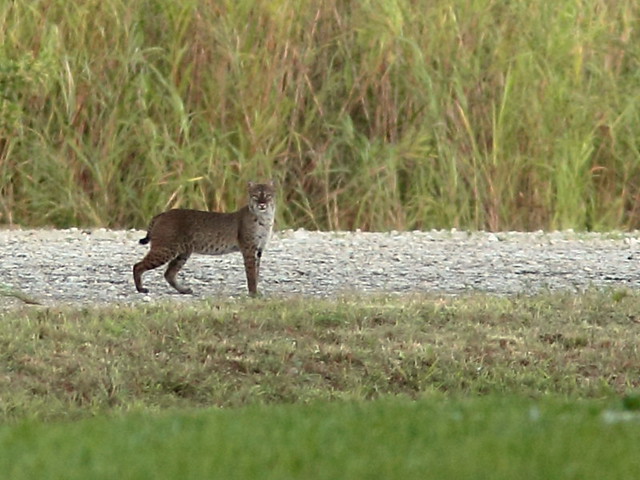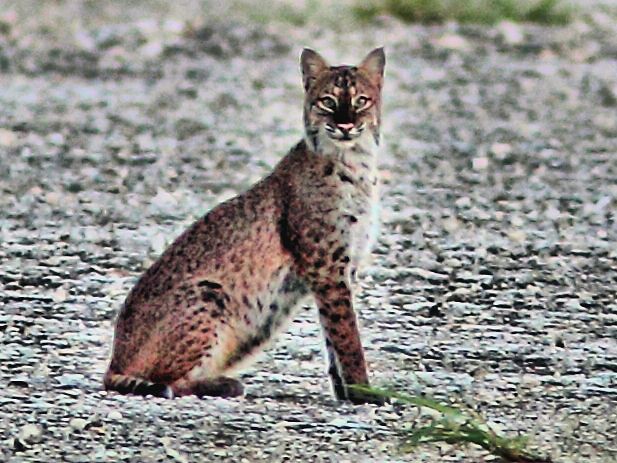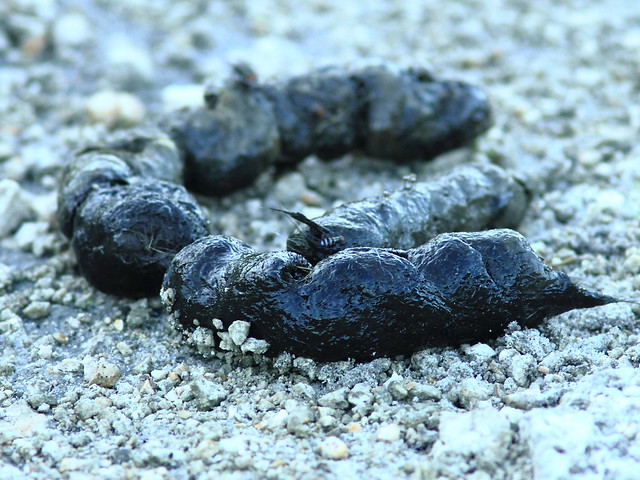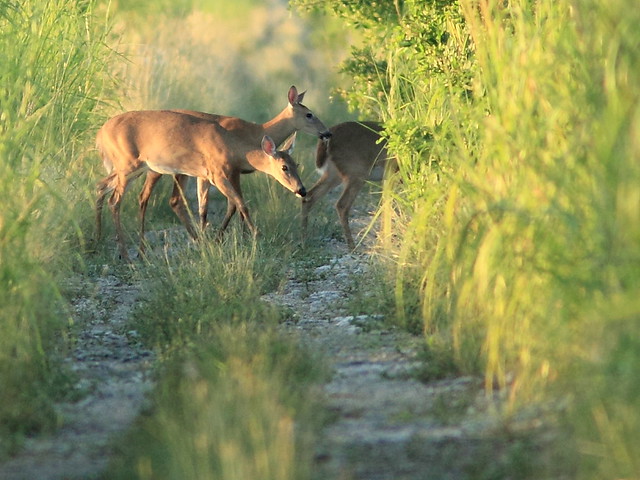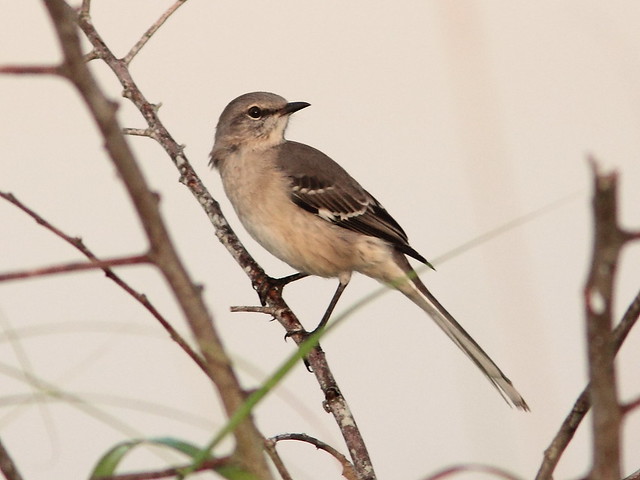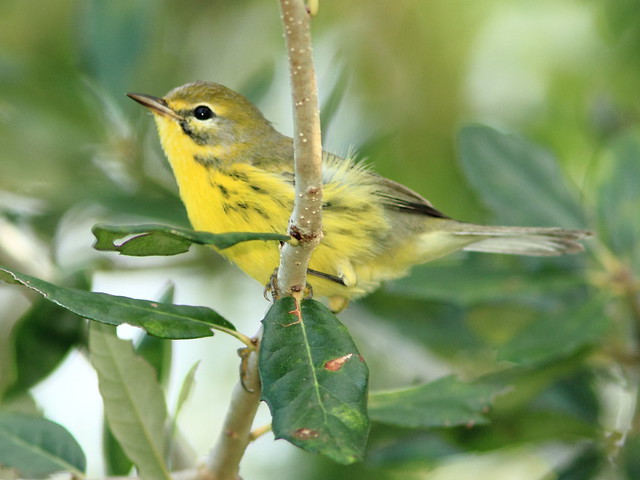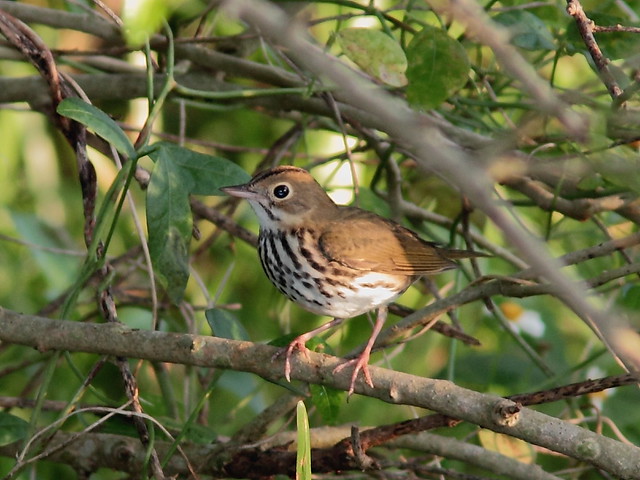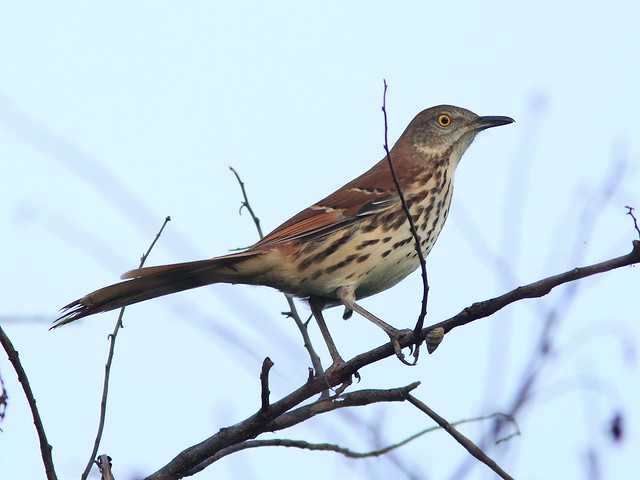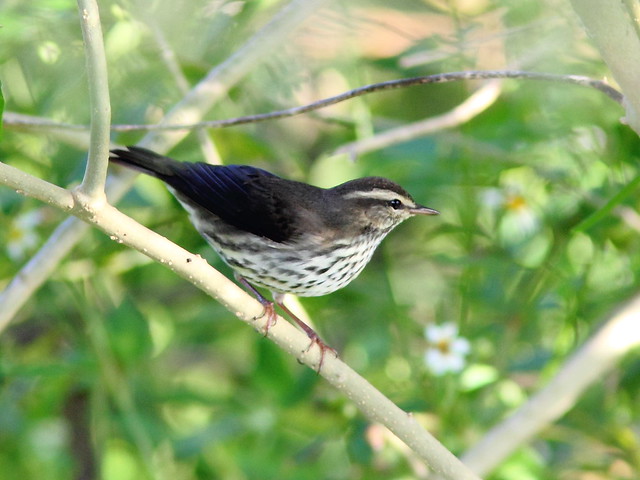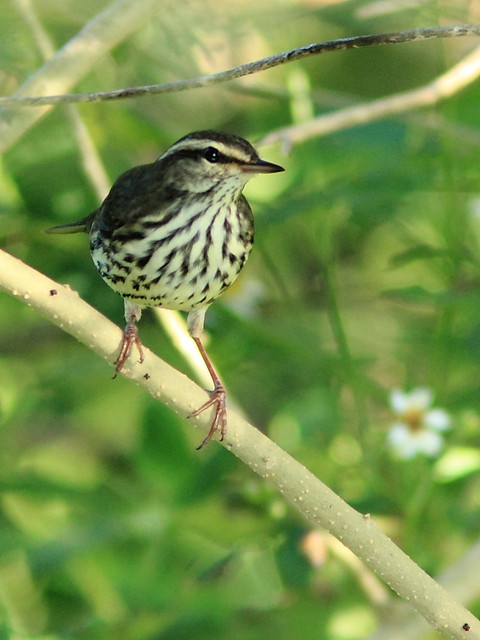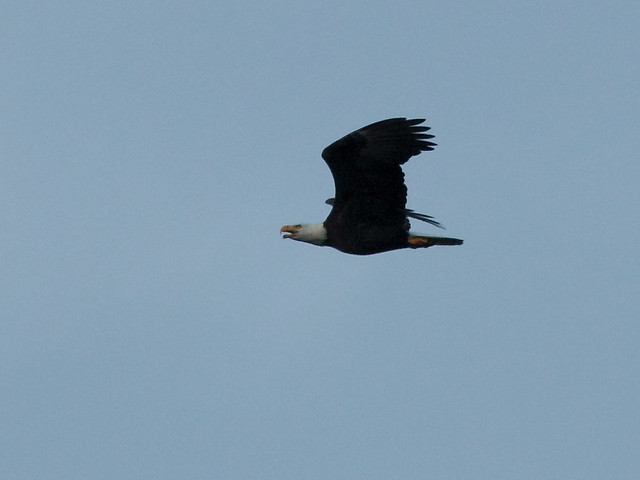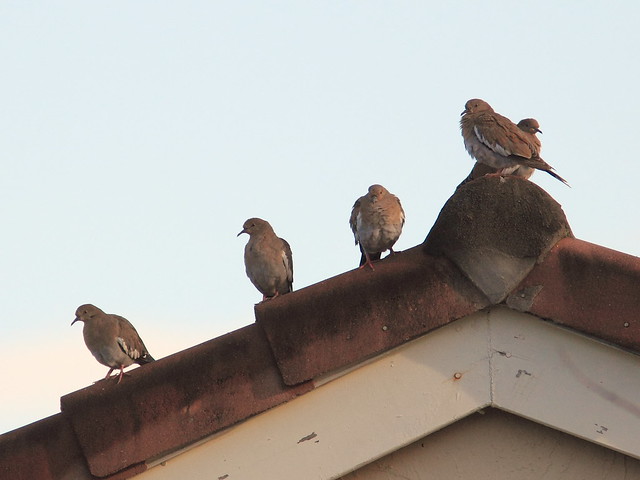Posted by: Ken @ 1:00 pm
It was about 15 minutes after sunrise and cloudy when Mary Lou and I approached the bend in the road at the junction of the unpaved portions of Miramar Parkway and SW 196th Avenue. I had pre-set the ISO at 800 (aperture open all the way to f/5.6) but did not expect to take any photos until after we completed the fast-paced “aerobic” mile into the wetlands adjacent to our subdivision. Only about a quarter mile into our walk, we suddenly saw a Bobcat standing almost in the middle of the road, about 100 yards away.
This was the first time one had posed out in the open roadway like that. We slowly moved up to about 50 yards before the cat fled. Unfortunately, I had kept the camera in an air conditioned room, and the lens fogged up pretty badly in the stifling heat and humidity. I wiped them a few times, but the quality of all the photos suffered.
This was about the sharpest image I got, so I processed it a couple of different ways. The above one is made up of four layers on the cropped original RAW image, each with a different exposure compensation (-1.0, -0.5, +0.5 and +1.0), thus producing an HDR-like effect. The cat suddenly fled towards the levee path that follows south along the 196th Avenue Canal.
I followed the Bobcat’s retreat route up along the levee path, but never caught sight of it again. However, I found very fresh Bobcat scat. The Bobcat dropped these feces out in the open with no attempt to conceal them, suggesting it was a male. Females usually deposit it less conspicuously and often scratch dirt over it as do House Cats. Note heavy black “tar” color due to digested blood, characteristic “Tootsie Roll” segmentation, large bore (~1 inch), inclusion of much hair and few bone fragments.
Three female White-tailed Deer appeared up ahead and walked towards me. I stood motionless , but the sun was getting higher and I became uncomfortably hot and finally started to move into a shady area. This frightened the does. It is a treat to see them here, as they are not very abundant.
I gave up my attempt to stalk the Bobcat and checked out the birds. A Loggerhead Shrike looked down at me from the top of a shrub.
Moving back down the what is left of my “Fake Hammock,” I took a spot in the shade and waited to see which birds might show up. This Northern Mockingbird was one of several moving about.
Predictably, a Prairie Warbler came out of hiding.
An Ovenbird peered out from the deep foliage.
Several Brown Thrashers have congregated in this area, more often heard than seen. This one flew out into the open.
A pair of Common Yellowthroats busily foraged in the low vegetation. The male briefly came out into the light.
Palm Warblers have arrived in good numbers. All are of the somber Western subspecies. Oddly, the east coast birds turn to the southwest before reaching Florida and the Gulf of Mexico, on their way to spend the winter in Texas and Mexico. Their paths cross with the western population, which flies SE to winter in Florida and Cuba. They reverse the criss-cross pattern when returning north in spring.
Suddenly a Northern Waterthrush walked out of the darkness unto a small limb, its tail slowly bobbing characteristically.
The waterthrush paused to look me over before flying off.
A Bald Eagle flew over, tracking a perfect line from its nesting area two miles northwest in Pembroke Pines to the large lake in our subdivision. For updates on our local eagle nest, visit my Bald Eagle Nest Watch FORUM.
On the way home, I saw several White-winged Doves lined up on a neighbor’s roof.













